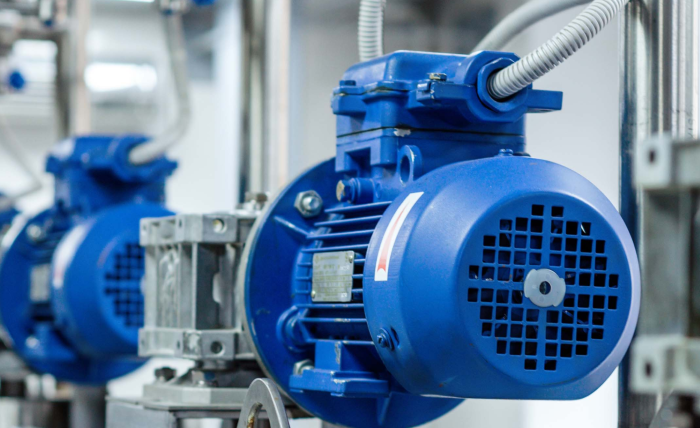
Electric motors power nearly everything around us, from home appliances to massive industrial systems. As technology evolves, the demand for cleaner, faster, and more efficient motors continues to rise. Engineers and manufacturers are constantly developing smarter solutions that reduce energy waste while improving performance.
Among these advancements, stator core laminations have become one of the most crucial components driving efficiency gains. After minimizing energy loss through heat and magnetic resistance, these innovations help motors operate with greater precision and durability.
Advances in Magnetic Materials
The efficiency of a motor depends heavily on the magnetic materials used in its core. Recent developments in high-silicon steel and amorphous alloys have reduced energy loss caused by magnetic hysteresis. These materials help motors convert electricity into motion more effectively, saving power during every cycle.
Manufacturers now experiment with nanocrystalline metals, which provide even greater magnetic strength. This shift toward advanced materials enables smaller motors to achieve higher output with reduced energy consumption. It also extends motor life by reducing heat and mechanical strain.
Improved Stator Design for Better Performance
Modern motor designs focus on optimizing the stator, the stationary part that holds the windings and magnetic cores. Precision engineering allows for tighter winding patterns and enhanced insulation, which reduces energy loss.
After refining the geometry of the stator slots, manufacturers achieve better magnetic flux distribution. The inclusion of improved stator core laminations supports smoother operation and less vibration. These innovations ensure motors run cooler, quieter, and more efficiently across industries.
Integration of Smart Sensors
The addition of smart sensors has transformed how motors are monitored and maintained. Embedded systems track temperature, vibration, and power output in real time. This data helps detect inefficiencies early and prevents costly breakdowns.
Sensors also adjust motor performance dynamically based on load conditions. The result is greater control and energy savings. As connected devices continue to gain popularity, smart motor systems are expected to become the standard in factories, vehicles, and household equipment.
Use of Additive Manufacturing Techniques
Additive manufacturing, also known as 3D printing, has revolutionized motor production. Engineers can now create custom motor parts with complex geometries that were once impossible to manufacture using traditional methods.
This precision reduces waste, shortens production cycles, and allows rapid prototyping. In addition, lighter yet stronger components improve balance and efficiency. As 3D printing technology continues to evolve, it will play an even greater role in designing high-performance motors tailored to specific applications.
Adoption of High-Efficiency Cooling Systems
Heat management remains one of the biggest challenges in motor operation. Overheating wastes energy and shortens a motor’s lifespan. New cooling technologies use advanced airflow systems, liquid cooling, and nanomaterials to dissipate heat more effectively.
These systems allow motors to run at higher power levels without compromising durability. Improved cooling also reduces maintenance needs, keeping operations smooth and cost-effective. In environments with continuous workloads, efficient heat control is vital for long-term performance.
Automation and Precision Manufacturing
Automation has made it possible to produce motors with near-perfect consistency. Robotic assembly lines minimize human error, ensuring the exact placement of components like stator cores and rotors. This precision boosts overall performance and reduces friction losses.
Advanced measurement tools verify every component’s alignment during production. The result is a motor that meets tight tolerance requirements while maintaining balance at high speeds. Automated systems also allow faster scaling for manufacturers meeting global energy efficiency standards.
Focus on Sustainable and Recyclable Materials
Environmental responsibility plays a growing role in motor development. Manufacturers are prioritizing recyclable metals, non-toxic coatings, and renewable resources in production. The push for sustainability extends to packaging, logistics, and waste reduction during manufacturing.
Motors made with eco-friendly materials reduce environmental impact and attract companies aiming for greener operations. With stricter environmental regulations worldwide, sustainable motor design is becoming a competitive advantage.
Energy Optimization Through Digital Control Systems
Digital control systems now replace older mechanical mechanisms, giving motors unmatched precision. These systems use algorithms to adjust torque, speed, and voltage instantly based on operating conditions. This optimization minimizes energy waste and enhances reliability.
Software updates allow ongoing improvements without physical modifications. Combined with smart grids and connected systems, digital controls ensure motors contribute to smarter, energy-efficient operations across multiple industries.
The quest for higher motor efficiency continues to drive breakthroughs in materials, design, and technology. From stator core laminations that minimize energy loss to smart systems that adapt in real time, innovation is reshaping every detail of motor engineering.
As industries shift toward cleaner and smarter energy solutions, these developments will play a central role in creating a more efficient future. Precision, sustainability, and digital intelligence now define the new era of motor design, one built for performance and responsibility in equal measure.




